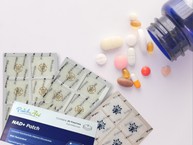Some people love winter. They love the cooler or freezing temperatures, rain or snow, and staying indoors by the fire. Other people get the winter blues. And they are not fun.
The winter blues are more than something to just “get over.” And they’re not just “cabin fever.” For some people, the winter blues are a sign of seasonal affective disorder, or SAD. It is a real condition, but there are some strategies that work for many people. Living a healthy lifestyle, getting enough vitamin D, and trying a happy lamp are just a few of them. Ask your doctor if you think you may need help getting over the winter blues.
Signs of Seasonal Affective Disorder (SAD)
You may have SAD if you notice that your mood changes every year during the winter months. After the autumnal equinox that marks the start of fall, the nights are longer than the days. You may get less sunlight and stay inside for longer. Signs that you have SAD include being cranky or tired, having trouble sleeping, being anxious, and feeling sad or lonely.
Strategies for Seasonal Affective Disorder (SAD)
General healthy living can help reduce SAD for some people. This includes getting plenty of physical activity, including in the sunshine when you can. Eat your fruits and vegetables to get antioxidants and other nutrients. Try to surround yourself with people who make you happy or spend your time doing activities you enjoy. And talk to your doctor about light therapy to mimic the natural sunlight that is absent in winter.
Vitamin D3 and Winter Blues
One vitamin in particular can be related to the onset of SAD. As the days get shorter and the sun is not as intense, vitamin D levels can drop and contribute to cabin fever. While it is true that some vitamin D is in foods, it is not widespread. Fatty fish, fortified milk, and some fortified orange juice and cereal, are a few of the sources.
But a good deal of vitamin D3 comes when your skin is exposed to radiation from the sun. In winter, the sun may not be intense enough, or you may not be out in it for long enough, to benefit. That can leave you with a seasonal deficiency.
You can be even more likely to get a vitamin D deficiency if you have certain risk factors, such as being an older adult, living in a northern climate, or having darker skin. It is easy to ask your doctor to order a simple blood test for vitamin D3 status. If you are deficient, a Vitamin D3 patch may be recommended.
PatchAid Vitamin D3 Patches
PatchAid Vitamin Patches are easy to use, and they contain high amounts of vitamin D3.
These patches also have vitamin K, magnesium, and calcium.
Be sure to ask your doctor if you tend to get seasonal affective disorder or think SAD may affect you. For most people, there is no need to dread a sad change in mood every year if you are doing everything you can to keep yourself healthy and happy. It may be as simple as using a PatchAid Vitamin D3 Patch to keep up your levels year-round.







